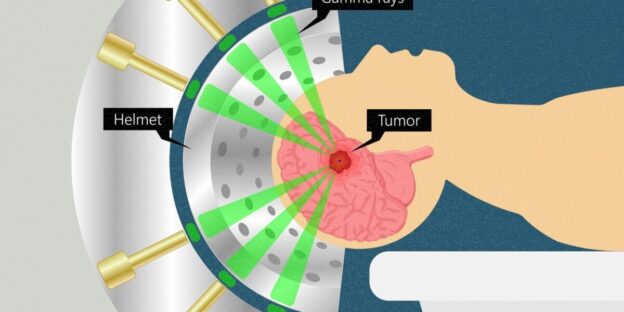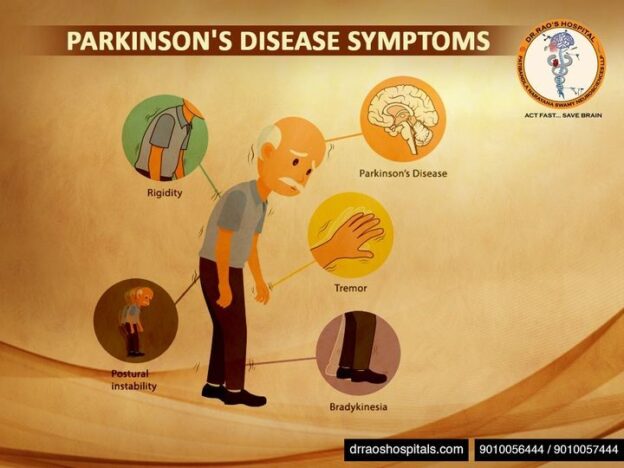Stereotactic Radiosurgery: All You Need To Know About
Stereotactic radiosurgery is a non-surgical radiation therapy used to treat functional impairments and tiny brain tumors. It can help maintain healthy tissues by delivering precisely focused radiation in fewer high-dose treatments than traditional therapy.
At Dr. Rao’s Hospital, one of the best neurology hospitals in Guntur, Andhra Pradesh, highly qualified and experienced neurosurgeons collaborate to ensure that patients receive the care they require, whether it’s immediate care, surgical treatment, cutting-edge diagnostics, and therapeutic interventions, clinical trials, or rehabilitative services.
This article discusses stereotactic radiosurgery (SRS), its advantages over traditional approaches, and how SRS treatment can improve quality of life.
First, let’s know,
What is stereotactic radiosurgery, and how does it work?
Stereotactic radiosurgery is a form of radiation therapy used to treat brain and spine cancers and other brain disorders. During the treatment, small, precise doses of radiation are focused on the brain or spinal cord. Tumors shrink, or aberrant blood vessels and nerves that cause pain or convulsions are blocked.
Some brain illnesses, such as Parkinson’s disease, can be treated with stereotactic radiosurgery. For some patients, stereotactic radiosurgery is a viable alternative to neurosurgery. It requires shorter hospitalization and recovery times and is less intrusive.
At Dr. Rao’s Hospital, a renowned stereotactic radiosurgery hospital in Andhra Pradesh, our skilled neurosurgeons can use stereotactic radiosurgery to treat tumors that are challenging to treat with traditional surgery. Radiation kills both normal and malignant cells.
Our surgeons and care team may employ specialized equipment and techniques to target the tumor while minimizing damage to healthy cells.
Stereotactic radiosurgery is just one treatment option for brain and spine tumors and other brain illnesses. Surgeons may utilize the Gamma Knife, noninvasive neurosurgical equipment, to focus radiation on brain malignancies. Other difficult-to-treat brain disorders are also treated with Gamma Knife radiosurgery.
Now, let’s know,
What is the purpose of stereotactic radiosurgery?
A neurosurgeon may recommend stereotactic radiosurgery to treat the following conditions:
- Acoustic neuroma.
- Arteriovenous malformations (AVMs).
- Tumors of the brain.
- Some ocular diseases.
- Epilepsy results from a brain tumor.
- Parkinson’s disease.
- Tumors of the pineal gland.
- Tumors of the pituitary gland.
- Psychoneurosis.
- Tumors of the skull base
- Tumors of the spine.
- Trigeminal neuralgia.
In addition, stereotactic radiosurgery can be used to:
- Improve conventional radiation therapy.
- Provide another choice when previous treatments have failed.
- Treat or control a reoccurring spinal tumor.
- Treat or maintain the remaining area of a tumor following surgery.
Is SRS a painful procedure?
Both you and our care team value your comfort and relaxation. Stereotactic radiosurgery is a painless procedure. Sedative medicines may keep children and anyone else who is claustrophobic or has problems sitting still in the immobilization device comfortable during the surgery.
You may feel some pressure when installing a head frame on the skull. Medications prescribed by your doctor can help. Following therapy, some people have a headache or nausea. The headache and nausea usually pass in a day or two. If you are uncomfortable, tell your doctor or care team.
How will I feel after stereotactic radiosurgery?
The majority of side effects are minor and only last a short time. After stereotactic radiosurgery, some patients feel good and have no adverse effects.
After surgery, some patients feel nauseous, hungry, or have a headache. Other minor side effects, such as tiredness and skin irritability, may appear soon after surgery.
Your doctor will prescribe drugs to assist you in coping with the side effects. If you are having difficulties managing side effects, talk to your doctor.
When will I be able to return home?
Most patients return home the same day after the stereotactic radiosurgery. However, others may remain for observation overnight. If you have sedation, you will still be dizzy and likely require transportation home. You should not drive for at least 24 hours and should have someone accompany you throughout that time.
What are the benefits of stereotactic radiosurgery?
- No hospitalization, surgical cuts, blood loss, or other operative complications.
- Shorter treatment time than conventional treatment.
- Better tumor growth control.
- Treatment is delivered from multiple treatment angles, sparing normal tissue.
Does stereotactic radiosurgery improve the quality of life?
Compared to traditional radiation therapy, SRS has improved the quality of life since it reduces radiation exposure to normal brain tissue. When compared to whole-brain radiation therapy, the cognitive impact has been found to be minor.
The medication improves memory preservation while lowering the likelihood of leukoencephalopathy and white matter loss. As a result, the risk of neurobehavioral slowness, apathy, poor bilateral fine motor control, memory retrieval, and frontal lobe executive dysfunction is reduced. The goal is to deliver doses that will kill the tumor and give the patient long-term local control.
Please book an appointment with one of our expert neurosurgeons in Guntur to determine your treatment options and which ones are best for your neurological condition.
Dr. Rao’s Contact Information:
- Phone: 9010056444, 9010057444
- Email: info@drraoshospitals.com
- Address: Old Bank St, GV Thota, beside AK Biryani Point, Guntur, Andhra Pradesh 522001
- Website: Dr. Rao’s Hospital


